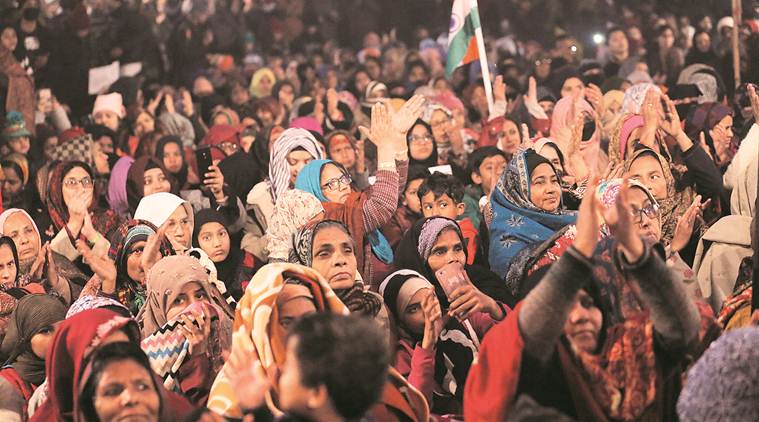 The women protesters at Shaheen Bagh. (Photo: Tashi Tobgyal)
The women protesters at Shaheen Bagh. (Photo: Tashi Tobgyal)
When her six-year-old daughter asked her “Shaheen Bagh mein kaunsa current lagega?” Zehra Siddiqui figured out that her child had heard Home Minister Amit Shah’s speech on TV, but she didn’t have an answer to her question.
“We begin every day at Shaheen Bagh with the national anthem, followed by Hindu-Muslim-Sikh-Isai/Aapas mein hai bhai-bhai… What she is hearing from politicians is traumatising, not the protests at Shaheen Bagh,” said Siddiqui, at a panel discussion titled “Bringing up children in times of protests” at Saiyidain Manzil, Jamia Nagar, earlier this month.
Last month, the National Commission for Protection of Child Rights (NCPCR) issued an order to the DM, South East Delhi, to identify the children involved in anti-CAA protests in Shaheen Bagh and send them for counselling as they “may suffer from mental trauma because of rumours and miscommunication”.
Apart from three mothers, the panel at Jamia Nagar comprised Dr Poonam Batra, professor of education, DU; child and adolescent psychologist Dr Amit Sen; Jamia professor Farah Farooqui; Supreme Court advocate Anuj Prakash; and child rights activist and NCPCR’s first chairperson Dr Shanta Sinha.
Batra said, “Women don’t have a choice except to bring children to work spaces, protest sites. Haven’t we all seen toddlers at constructions sites sitting atop rubble? Has the NCPCR intervened there?”
Prakash added: “How is it okay for a child to sit outside a locked house and not in the lap of his/her mother at a protest? NCPCR is not raising a voice against children being beaten up by police.”
Shabana, who was a part of the panel along with her toddler, said the protest is a place of learning for her kids: “At the site, there are photos of freedom fighters and I tell my daughter, who is in class III, about them. She tells me that it’s all a part of her GK class too. She goes home and recites the slogans of unity for her father.”
Kehkashan, a Shaheen Bagh resident and protester, said, “As mothers, we know what’s best for our children. They are learning about inclusiveness and how to fight for their rights at Shaheen Bagh; on TV, they are hearing slogans like ‘desh ke gaddaro ko’… you tell me what’s good for my child now?”